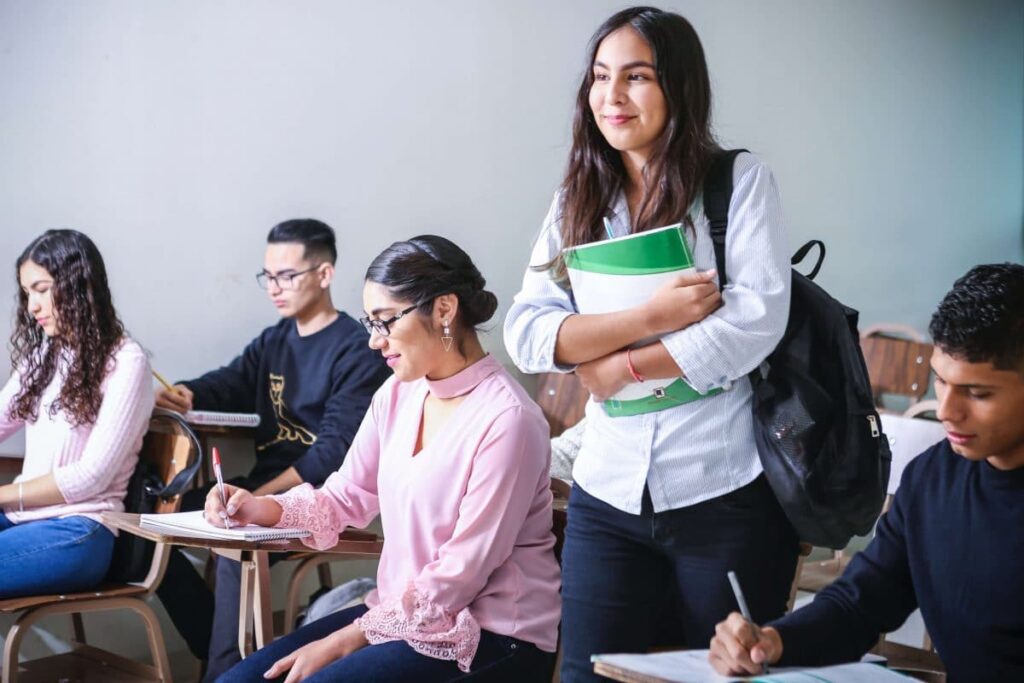
Best Traditional Teaching Methods
Traditional teaching methods are based upon the principle that knowledge is best gained by students when guided by experienced educators. They aim at educating the young for the industrial, intellectual, and business demands of tomorrow. Learning results are measured through test scores and academic achievement. Although traditional teaching and learning strategies have their own share of merits and demerits, it has been found that some of these teaching styles are not very effective in imparting knowledge or developing abilities.
What are traditional teaching methods?
Traditional teaching and learning methods are a group of practices and theories which have been used since ancient times in the educational arena in order to enhance learning and teaching outcomes. They are based upon traditional practices such as the family, community, and the authority figures who intervened to ensure that children become well-mannered, disciplined, and intelligent individuals. They are also based upon a social perspective that regards children as the basic unit of society and as future citizens. It also considers physical and mental development as the basis for learning and teaching. These traditional teaching and learning strategies seek to educate the children from the earliest age so that they develop into socially mature adults having high-order thinking skills and the ability to take charge of their lives.

Three elements of traditional teaching methods
This traditional teaching method is generally agreed to be founded on three elements including, the role of the teacher, the content of the class, and the method of teaching. Each of these three elements is equally important but each one plays a different and specific role in a traditional education system. For example, the teacher plays the most prominent role in determining the content of the class. His or her main responsibility is to formulate a curriculum that will be followed throughout the whole class time and serve as the focal point of student attention.
He or she is also responsible for formulating suitable activities, games, and lessons to ensure that the class is made interesting and appealing to students. The teacher is also in charge of creating a suitable environment for learning within the classroom. This environment should be free from any distracting noise such as children’s voices, sudden movements, or any other kind of external disturbances. The traditional education system ensures that all these conditions are fulfilled by the teacher.
Structuring of the lesson and the scheduling of activities
Traditional teaching methods also include the structure of the lesson and the scheduling of activities. In traditional education, the lesson is divided into small units called modules. The number of modules may vary depending on the age and level of the students. The lesson consists of instruction, teaching, practice, or testing and review. Review is considered to be an important part of traditional teaching because it helps the learner to remember and understand the subject matter.
Teachers also follow certain procedures in teaching the same subject. For example, in traditional education, lessons are usually given in single classes or groups. In a group class, the instructor guides the students through a specific procedure or activity. The objective of this activity is to achieve a common goal.
Advantages and disadvantages
Traditional teaching methodologies have their own advantages as well as disadvantages. Some of the disadvantages of traditional education methods include the long duration of time that traditional teachers require to teach a particular subject. Also, traditional education tends to focus more on memorization than on creative thinking and practical application of knowledge. Furthermore, traditional teaching methods also require teachers to rely largely on memorization as a source of information for the lessons.
The benefits of traditional teaching methods include; consistency, immediate feedback, and a controlled environment. Traditional methods help the students learn faster and recognize patterns easily. Traditional teaching methods help the students gain mastery over various subjects in less time. They also make learning more fun. Traditional teaching methods also help the children to gain respect for themselves and for teachers as well as improve self-confidence. On the other hand, this kind of teaching does not incorporate modern technology, such as blogs and social media, into classes. This can be a bit unusual to today’s students.


